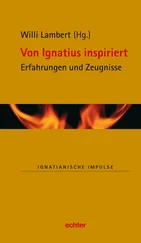Ignatius Donnelly - Antediluvian world
Здесь есть возможность читать онлайн «Ignatius Donnelly - Antediluvian world» весь текст электронной книги совершенно бесплатно (целиком полную версию без сокращений). В некоторых случаях можно слушать аудио, скачать через торрент в формате fb2 и присутствует краткое содержание. Жанр: Старинная литература, на русском языке. Описание произведения, (предисловие) а так же отзывы посетителей доступны на портале библиотеки ЛибКат.
- Название:Antediluvian world
- Автор:
- Жанр:
- Год:неизвестен
- ISBN:нет данных
- Рейтинг книги:5 / 5. Голосов: 1
-
Избранное:Добавить в избранное
- Отзывы:
-
Ваша оценка:
- 100
- 1
- 2
- 3
- 4
- 5
Antediluvian world: краткое содержание, описание и аннотация
Предлагаем к чтению аннотацию, описание, краткое содержание или предисловие (зависит от того, что написал сам автор книги «Antediluvian world»). Если вы не нашли необходимую информацию о книге — напишите в комментариях, мы постараемся отыскать её.
Antediluvian world — читать онлайн бесплатно полную книгу (весь текст) целиком
Ниже представлен текст книги, разбитый по страницам. Система сохранения места последней прочитанной страницы, позволяет с удобством читать онлайн бесплатно книгу «Antediluvian world», без необходимости каждый раз заново искать на чём Вы остановились. Поставьте закладку, и сможете в любой момент перейти на страницу, на которой закончили чтение.
Интервал:
Закладка:
Everything in Europe speaks of vast periods of time and long, continued and constant interfusion of bloods, until there is not a fair-skinned man on the Continent that has not the blood of the dark-haired race in his veins; nor scarcely a dark-skinned man that is not lighter in hue from intermixture with the white stock.
CHAPTER VI.
GENESIS CONTAINS A HISTORY OF ATLANTIS
The Hebrews are a branch of the great family of which that powerful commercial race, the Phoenicians, who were the merchants of the world fifteen hundred years before the time of Christ, were a part. The Hebrews carried out from the common storehouse of their race a mass of traditions, many of which have come down-to us in that oldest and most venerable of human compositions, the Book of Genesis. I have shown that the story of the Deluge plainly refers to the destruction of Atlantis, and that it agrees in many important particulars with the account given by Plato. The people destroyed were, in both instances, the ancient race that had created civilization; they had formerly been in a happy and sinless condition; they had become great and wicked; they were destroyed for their sins—they were destroyed by water.
But we can go farther, and it can be asserted that there is scarcely a prominent fact in the opening chapters of the Book of Genesis that cannot be duplicated from the legends of the American nations, and scarcely a custom known to the Jews that does not find its counterpart among the people of the New World.
Even in the history of the Creation we find these similarities: The Bible tells us (Gen. i., 2) that in the beginning the earth was without form and void, and covered with water. In the Quiche legends we are told, “at first all was sea—no man, animal, bird, or green herb—there was nothing to be seen but the sea and the heavens.”
The Bible says (Gen. i., 2), “And the Spirit of God moved upon the face of the waters.” The Quiche legend says, “The Creator—the Former, the Dominator—the feathered serpent—those that give life, moved upon the waters like a glowing light.”
The Bible says (Gen. i., 9), “And God said, Let the waters under the heaven be gathered together unto one place, and let the dry land appear: and it was so.” The Quiche legend says, “The creative spirits cried out ‘Earth!’ and in an instant it was formed, and rose like a vapor-cloud; immediately the plains and the mountains arose, and the cypress and pine appeared.”
The Bible tells us, “And God saw that it was good.” The Quiche legend says, “Then Gucumatz was filled with joy, and cried out, ‘Blessed be thy coming, O Heart of Heaven, Hurakan, thunder-bolt.’”
The order in which the vegetables, animals, and man were formed is the same in both records.
In Genesis (chap. ii., 7) we are told, “And the Lord God formed man of the dust of the ground.” The Quiche legend says. “The first man was made of clay; but he had no intelligence, and was consumed in the water.”
In Genesis the first man is represented as naked. The Aztec legend says, “The sun was much nearer the earth then than now, and his grateful warmth rendered clothing unnecessary.”
Even the temptation of Eve reappears in the American legends. Lord Kingsborough says: “The Toltecs had paintings of a garden, with a single tree standing in the midst; round the root of the tree is entwined a serpent, whose head appearing above the foliage displays the face of a woman. Torquemada admits the existence of this tradition among them, and agrees with the Indian historians, who affirm that this was the first woman in the world, who bore children, and from whom all mankind are descended.” (“Mexican Antiquities,” vol. viii., p. 19.) There is also a legend of Suchiquecal, who disobediently gathered roses from a tree, and thereby disgraced and injured herself and all her posterity. (“Mexican Antiquities,” vol. vi., p. 401.)
The legends of the Old World which underlie Genesis, and were used by Milton in the “Paradise Lost,” appear in the Mexican legends of a war of angels in heaven, and the fall of Zou-tem-que (Soutem, Satan—Arabic, Shatana?) and the other rebellious spirits.
We have seen that the Central Americans possessed striking parallels to the account of the Deluge in Genesis.
There is also a clearly established legend which singularly resembles the Bible record of the Tower of Babel.
Father Duran, in his MS. “Historia Antiqua de la Nueva Espana,” A.D.
1585, quotes from the lips of a native of Cholula, over one hundred years old, a version of the legend as to the building of the great pyramid of Cholula. It is as follows:
“In the beginning, before the light of the sun had been created, this land (Cholula) was in obscurity and darkness, and void of any created thing; all was a plain, without hill or elevation, encircled in every part by water, without tree or created thing; and immediately after the light and the sun arose in the east there appeared gigantic men of deformed stature and possessed the land, and desiring to see the nativity of the sun, as well as his occident, proposed to go and seek them. Dividing themselves into two parties, some journeyed to the west and others toward the east; these travelled; until the sea cut off their road, whereupon they determined to return to the place from which they started, and arriving at this place (Cholula), not finding the means of reaching the sun, enamored of his light and beauty, they determined to build a tower so high that its summit should reach the sky. Having collected materials for the purpose, they found a very adhesive clay and bitumen, with which they speedily commenced to build the tower; and having reared it to the greatest possible altitude, so that they say it reached to the sky, the Lord of the Heavens, enraged, said to the inhabitants of the sky, ‘Have you observed how they of the earth have built a high and haughty tower to mount hither, being enamored of the light of the sun and his beauty? Come and confound them, because it is not right that they of the earth, living in the flesh, should mingle with us.’ Immediately the inhabitants of the sky sallied forth like flashes of lightning; they destroyed the edifice, and divided and scattered its builders to all parts of the earth.”
RUINS
OF
THE
TEMPLE
OF
CHOLULA
.
One can recognize in this legend the recollection, by a ruder race, of a highly civilized people; for only a highly civilized people would have attempted such a vast work. Their mental superiority and command of the arts gave them the character of giants who arrived from the East; who had divided into two great emigrations, one moving eastward (toward Europe), the other westward (toward America). They were sun-worshippers; for we are told “they were enamored of the light and beauty of the sun,”
and they built a high place for his worship.
The pyramid of Cholula is one of the greatest constructions ever erected by human hands. It is even now, in its ruined condition, 160 feet high, 1400 feet square at the base, and covers forty-five acres; we have only to remember that the greatest pyramid of Egypt, Cheops, covers but twelve or thirteen acres, to form some conception of the magnitude of this American structure.
It must not be forgotten that this legend was taken down by a Catholic priest, shortly after the conquest of Mexico, from the lips of an old Indian who was born before Columbus sailed from Spain.
Observe the resemblances between this legend and the Bible account of the building of the Tower of Babel:
“All was a plain without hill or elevation,” says the Indian legend.
“They found a plain in the land of Shinar, and they dwelt there,” says the Bible. They built of brick in both cases. “Let us build us a tower whose top may reach unto heaven,” says the Bible. “They determined to build a tower so high that its summit should reach the sky,” says the Indian legend. “And the Lord came down to see the city and the tower which the children of men had builded. And the Lord said, Behold . . .
Читать дальшеИнтервал:
Закладка:
Похожие книги на «Antediluvian world»
Представляем Вашему вниманию похожие книги на «Antediluvian world» списком для выбора. Мы отобрали схожую по названию и смыслу литературу в надежде предоставить читателям больше вариантов отыскать новые, интересные, ещё непрочитанные произведения.
Обсуждение, отзывы о книге «Antediluvian world» и просто собственные мнения читателей. Оставьте ваши комментарии, напишите, что Вы думаете о произведении, его смысле или главных героях. Укажите что конкретно понравилось, а что нет, и почему Вы так считаете.












